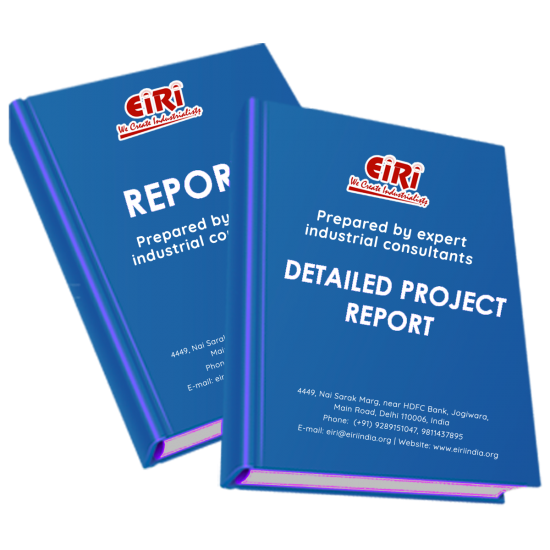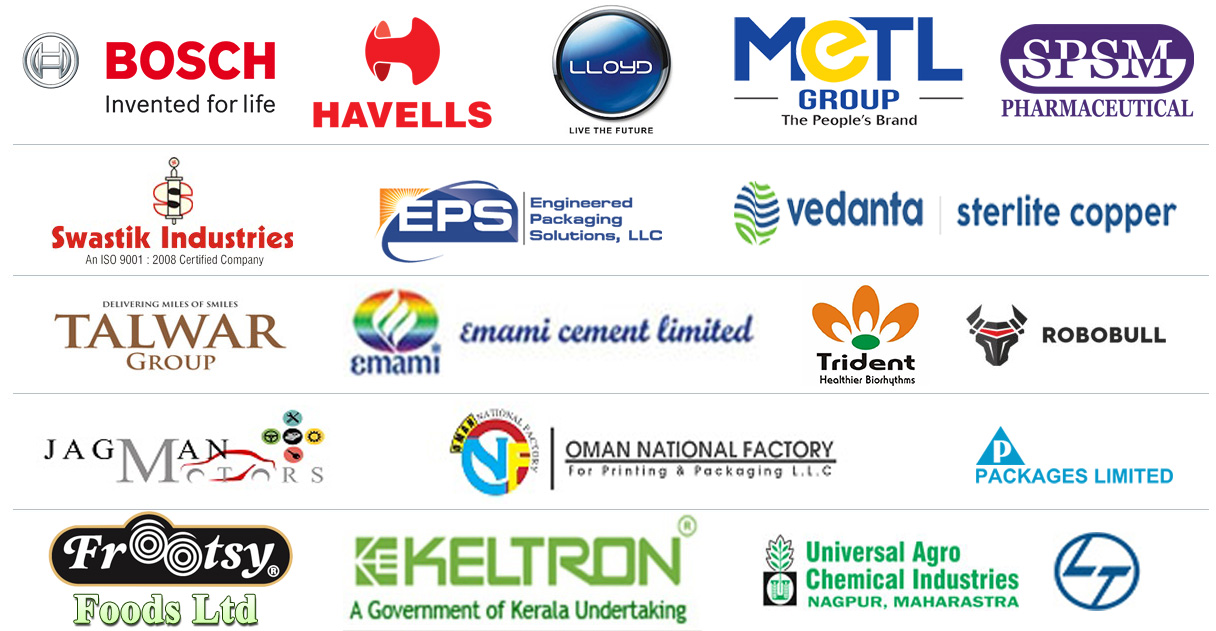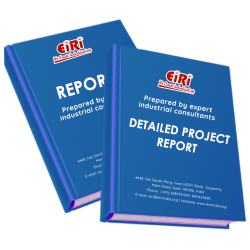Detailed Project Report on hdpe compounding plant

- More than 40 years of experience
- Managed by expert industrial consultants
- ISO 9001-2015 Certified
- Registered under MSME, UAM No: DL01E0012000
- 24/5 Research Support
Get your quesries resolved from an industry expert. Ask your queries before report or book purchase. - Custom Research Service
Speak to the our consultant to design an exclusive study to serve your research needs. - Quality Assurance
All reports are prepared by highly qualified consultants & verified by a panel of experts. - Information Security
Your personal & confidential information is safe & secure.
HDPE COMPOUNDING PLANT
[CODE NO.4126]
Plastics are used in many fields because they can be processed easily, are relatively light, and possess excellent chemical and physical properties. However, they also have undesirable properties from a combination of the material itself and processing. Therefore, it is important to hide or reduce the defects of plastics while sustaining or enhancing the merits as much as possible. To attain that aim, many kinds of polymer additives have been developed.
Additives are agents that sustain material's properties or functions, provide desirable properties for the bulk of a material, or provide its surface properties. This article focuses on the most widely used additives in the PE industry.
Compounding is the general term for the operation converting the polyethylene (PE) produced in a polymerization reactor into a pelletized form suitable for use by a downstream processor. In the compounding process, the polymer is physically and chemically modified by incorporating various additives. The selection of additives and of compounding conditions depends on the end application of the compounded product.
With the help of melt blending plastics, it is possible to change characteristics, such as:
• Physical
• Electrical
• Thermal
• Aesthetic
All compounding begins with polymers or base resins. Different resin systems exist, and so you must choose the proper one with correct characteristics for your final product. Once a base resin is picked, it is time to determine the specific additives, reinforcers, or fillers that will be incorporated into the compounded plastic. This process allows the final product to be precolour or flame retardant. It can also make plastic more or less conductive, while also strengthening final parts. There are several steps taken when creating specialty compounding. In the end, pellets are sent to customers for sheet extrusion or injection molding.
Plastic compounding is a process for adding additional materials into a molten plastic base to produce a material with desired qualities. Additives and modifiers may result in plastic with a particular color, texture, strength, and so on. A manufacturer may incorporate one or more additives into the base material in the process of plastic compounding.
While the process is different in each facility depending on the product being produced, plastic compounding typically involves several basic steps. Additives in the form of pellets, flakes, or powders are conveyed to a container of a molten plastic base material. The mixture goes through a number of blending and dispersal steps to incorporate these dditives into the base material and achieve a homogeneous final product.
Polyethylene and polypropylene are the two most common base polymers used in the plastic compounding process. Modifiers may be added to these base polymers in the form of powder or small pellets. Sometimes recycled material is added in the form of chips or shavings produced in the recycling process.
Filler material may be classified as either inert or active. Inert filler material typically increases the volume of the material inexpensively without adding any beneficial features. Its primary purpose is to reduce the cost of the material. Active filler, on the other hand, is added to improve the physical properties of the material. If a filler increases the tensile strength of the base material, it may be referred to as a reinforcement.
Manufacturers must take into account a number of factors when incorporating additives. Physical properties such as particle size and shape of the additive must be compatible with the base material. Even if it improves performance, an expensive additive may drive the price of the final product up too much for its target market. Suitability of an additive in the manufacturing environment must also be considered. For example, abrasive filler materials can degrade plastic compounding equipment, and dust from an additive in powder form may contaminate the manufacturing facility.
Modifiers used in plastic compounding serve a number of purposes when added to base polymers. They may reduce the cost of the final material substantially, thereby providing an economic advantage in the marketplace. Use of recycled material as additives can reduce consumer or industrial waste in landfills and save on waste disposal expenses.
Additionally, additives may improve the quality of the final product in a number of ways. Flame retardants and antioxidants may improve the safety of the material or extend its useful lifetime. Antacids may be added to a material to reduce the impact it has on the equipment used for processing. Glass or carbon fibers can increase the strength of a base polymer when incorporated into it.
A wide variety of products are made with materials developed through plastic compounding. Consumer products that incorporate these materials include toys, furniture, appliances, and more. Industrial applications include use in automotive components, pipes, construction, and others. The diverse array of materials that can be created with plastic compounding ensure widespread use of this process in product manufacturing well into the future.
COST ESTIMATION
Plant Capacity 100 MT/Day
Land & Building (3500 sq.mt.) Rs. 2.76 Cr
Plant & Machinery Rs. 11.95 Cr
Working Capital for 2 Months Rs. 44.22 Cr
Total Capital Investment Rs. 59.54 Cr
Rate of Return 37%
Break Even Point 36%
- INTRODUCTION
- LOCATION-HOSUR
- MAP
- CLIMATE
- TRANSPORT
- ROAD
- RAIL
- AIR
- RAW MATERIAL- HDPE
- CHEMICAL COMPOSITION AND MOLECULAR STRUCTURE
- WHY IS HDPE SO POPULAR
- MOLDABILITY
- RESISTANCE TO CORROSION
- STRENGTH TO DENSITY RATIO
- RECYCLABLE
- USES AND APPLICATION
- PACKAGING APPLICATIONS
- CONSUMER GOODS
- FIBERS AND TEXTILES
- OTHER POPULAR APPLICATIONS OF HDPE
- PROPERTIES
- ADVANTAGE & DISADVANTAGES OF HDPE
- ADVANTAGE OF HDPE BOTTLES
- RECYCLABLE
- SUSTAINABLE
- EASY TO LIGHTWEIGHT
- ADAPTABLE
- EASY TO USE
- SAFE AND SECURE
- COMMERCIAL
- INNOVATIVE
- DISADVANTAGE
- COMPARISON BETWEEN MAIN TYPES OF POLYETHYLENE
- LDPE
- LLDPE
- HDPE
- HDPE
- LDPE
- INJECTION MOLDING
- EXTRUSION
- PROPERTIES OF POLYMERIC MATERIALS
- PART I: ADDITIVES
- ADDITIVES (TYPES AND APPLICATIONS):
- ADDITIVES CLASSIFICATION:
- SYNERGISTIC AND ANTAGONISTIC:
- STABILIZERS
- ANTIOXIDANTS AND UV STABILIZERS
- STABILIZER SYNERGISM, AUTOSYNERGISM, AND ANTAGONISM
- ANTIOXIDANTS AND PROCESSING STABILIZERS
- EFFECTS OF PROCESSING AND ENVIRONMENTAL FACTORS ON OXIDATIVE DETERIORATION OF POLYMERS
- SCHEME 1
- SCHEME 2
- SCHEME 3
- ANTIOXIDANTS
- POLYMER AUTOXIDATION
- POLYMER STABILIZATION
- CHAIN-BREAKING OR PRIMARY ANTIOXIDANTS
- PHENOLICS
- STRUCTURE AND ACTION
- CHARACTERISTICS
- AROMATIC AMINES
- HINDERED AMINES
- METAL DEACTIVATORS
- PREVENTIVE OR SECONDARY ANTIOXIDANTS
- TRIVALENT PHOSPHORUS COMPOUNDS
- DIVALENT SULFUR COMPOUNDS
- PEROXIDE DECOMPOSERS
- SULFUR-CONTAINING ANTIOXIDANTS
- PHOSPHORUS-CONTAINING ANTIOXIDANTS
- SYNERGIST MIXTURES OF ANTIOXIDANTS
- ANTAGONISTIC MIXTURES OF ANTIOXIDANTS
- ANCILLARY PROPERTIES
- VOLATILITY
- COMPATIBILITY
- COLOR STABILITY
- PHYSICAL FORM
- TASTE AND ODOR
- REGULATORY ISSUES
- PERFORMANCE VERSUS COST
- INHIBITION OF OXIDATIVE DEGRADATION
- PROCESSING ANTIOXIDANTS
- THERMOOXIDATIVE ANTIOXIDANTS
- SCHEME 4
- SCHEME 5
- SCHEME 6
- SCHEME 7
- UV STABILIZERS
- UV ABSORBERS
- PIGMENTS
- COMMON ADDITIVES USED IN POLYETHYLENE
- CONCLUSIONS
- MANUFACTURING PROCESS
- COMPOUNDING PRINCIPLES & PRODUCT PROBLEMS RELATED TO COMPOUNDING
- ADDITIVE FEEDING
- DISPERSION
- COMPOUNDING PRINCIPLES
- CONTINUOUS MIXERS
- TWIN-SCREW EXTRUDERS
- MELT FILTRATION AND PELLETIZATION
- PELLET HANDLING AND POST BLENDING
- PRODUCT PROBLEMS RELATED TO COMPOUNDING
- GEL CONTAMINATION
- BLACK SPECK CONTAMINATION
- EXTRANEOUS CONTAMINATION
- ODOR
- PELLET GEOMETRY
- COLOR
- RHEOLOGY
- PROCESS CONTROL IN COMPOUNDING
- MAIN TECHNICAL SPECIFICATIONS
- PROCESS FLOW DIAGRAM
- ENVIRONMENTAL FACTS
- MARKET POSITION
- PRODUCT INSIGHTS
- APPLICATION INSIGHTS
- REGIONAL INSIGHTS
- KEY COMPANIES & MARKET SHARE INSIGHTS
- GLOBAL PLASTIC COMPOUNDING MARKET SIZE, BY END USE
- KEY BENEFITS FOR PLASTIC COMPOUNDING MARKET
- PLASTIC COMPOUNDING MARKET KEY SEGMENTS
- BY POLYMER TYPE
- BY END-USE
- BY REGION
- PLANT LOCATION FACTORS
- PRIMARY FACTORS
- EXPLANATION OF TERMS USED IN THE PROJECT REPORT
- RAW MATERIAL SUPPLIERS
- HDPE RESIN
- CARBON BLACK
- IRGANOX 1010, IRGANOS 1035, IRGANOS
- CALCIUM STEARATE
- IRGANOX 1010
- MACHINERY SUPPLIERS
- RAW MATERIAL PHOTOGRAPHS
- MACHINERY PHOTOGRAPHS
- PRODUCT PHOTOGRAPHS
APPENDIX – A:
01. PLANT ECONOMICS
02. LAND & BUILDING
03. PLANT AND MACHINERY
04. OTHER FIXED ASSESTS
05. FIXED CAPITAL
06. RAW MATERIAL
07. SALARY AND WAGES
08. UTILITIES AND OVERHEADS
09. TOTAL WORKING CAPITAL
10. TOTAL CAPITAL INVESTMENT
11. COST OF PRODUCTION
12. TURN OVER/ANNUM
13. BREAK EVEN POINT
14. RESOURCES FOR FINANCE
15. INSTALMENT PAYABLE IN 5 YEARS
16. DEPRECIATION CHART FOR 5 YEARS
17. PROFIT ANALYSIS FOR 5 YEARS
18. PROJECTED BALANCE SHEET FOR (5 YEARS)
How to Make Project Report?
Detailed Project Report (DPR) includes Present Market Position and Expected Future Demand, Technology, Manufacturing Process, Investment Opportunity, Plant Economics and Project Financials. comprehensive analysis from industry covering detailed reporting and evaluates the position of the industry by providing insights to the SWOT analysis of the industry.
Each report include Plant Capacity, requirement of Land & Building, Plant & Machinery, Flow Sheet Diagram, Raw Materials detail with suppliers list, Total Capital Investment along with detailed calculation on Rate of Return, Break-Even Analysis and Profitability Analysis. The report also provides a birds eye view of the global industry with details on projected market size and then progresses to evaluate the industry in detail.
We can prepare detailed project report on any industry as per your requirement.
We can also modify the project capacity and project cost as per your requirement. If you are planning to start a business, contact us today.
Detailed Project Report (DPR) gives you access to decisive data such as:
- Market growth drivers
- Factors limiting market growth
- Current market trends
- Market structure
- Key highlights
Overview of key market forces propelling and restraining market growth:
- Up-to-date analyses of market trends and technological improvements
- Pin-point analyses of market competition dynamics to offer you a competitive edge major competitors
- An array of graphics, BEP analysis of major industry segments
- Detailed analyses of industry trends
- A well-defined technological growth with an impact-analysis
- A clear understanding of the competitive landscape and key product segments
Need Customized Project Report?
- Ask for FREE project related details with our consultant/industry expert.
- Share your specific research requirements for customized project report.
- Request for due diligence and consumer centric studies.
- Still haven't found what you're looking for? Speak to our Custom Research Team
About Engineers India Research Institute:
Note: We can also prepare project report on any subject based on your requirement and country. If you need, we can modify the project capacity and project cost based on your requirement.
Our Clients

Our Approach
- Our research reports comprehensively cover Indian markets (can be modified as per your country), present investigation, standpoint and gauge for a time of five years*.
- The market conjectures are produced on the premise of optional research and are cross-accepted through associations with the business players
- We use dependable wellsprings of data and databases. What's more, data from such sources is handled by us and incorporated into the report
Why buy EIRI reports?
- Our project reports include detailed analysis that help to get industry Present Market Position and Expected Future Demand.
- Offer real analysis driving variables for the business and most recent business sector patterns in the business
- This report comprehends the present status of the business by clarifying a complete SWOT examination and investigation of the interest supply circumstance
- Report gives investigation and top to bottom money related correlation of real players/competitors
- The report gives gauges of key parameters which foresees the business execution






















